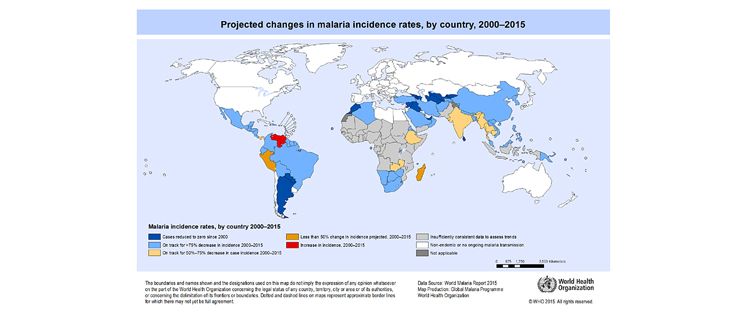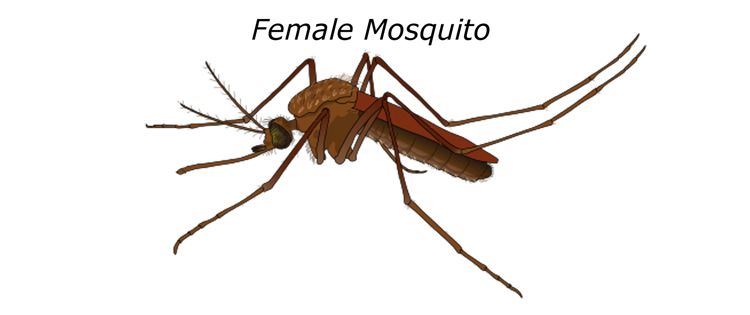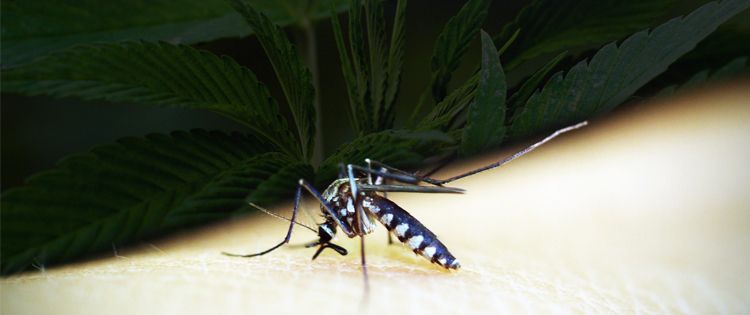A Pioneer of Growth and Discovery
“Cannabis is my passion, my bread, my home. I feel it is my duty to make sure this amazing plant is preserved and enjoyed. I am a smoker, a grower, a breeder, and a Strain Hunter for Life.” —
Franco Loja, Strain Hunter – May 20, 1974, to January 2, 2017.

In early 2017, we endured a sad loss to the cannabis world with the death of Franco Loja on the 2nd January, 2017 at age 42.
As one of the practicing head breeders of the Green House Seed Co. in Amsterdam, Netherlands, Franco was held in high regard within the professional and inclusive community as an upstanding global pioneer in Strain discovery, development, and responsible breeding. In work- and in his everyday life he worked to inspire and educate others about the highly-misunderstood plant- to great success. Whilst starring and running the popular online Youtube series, Strain Hunters – they traveled far and wide to discover unique and exotic cannabis strains, and include them within controlled and responsible breeding programs.
But amongst his many admirable qualities, Franco also represented a noble goal for the benefits of countless others, to utilise his talents and passions for the eradication of a debilitating disease which –to this day, still presents a deadly risk to almost half of the world’s global population: Malaria.
Sadly, it was during his quest to follow through this very passion that the disease eventually took his life. In his place, continued research and successful developments have been made to continue his ideal future. A future where malaria may be stricken from the world through the amazing neuroprotective properties of Cannabis.

Death Carried on the Back of Disease
“Malaria is an entirely preventable and treatable disease.”
– World Health Organization, 2016.
It starts off with good news. Between 2000- 2015 the number of Malaria cases and deaths have been significantly decreasing, with a 36% reduction in diagnosed cases and 60% fewer deaths. However, that been said, even with improvements to treatment and prevention, the burden of Malaria remains quite high, accounting for almost 214 million reported cases of Malaria Worldwide in 2015. According to the World Health Organization (WHO) statistical report in 2015, no less than an estimated 3.2 billion people over 95 countries in the world were at open risk to malaria infection. The risk of infection remains a present reality in many vulnerable territories as prevention methods continue to cost the economy.
This doesn’t take into account the complication Malaria continues to pose to the health and well-being of millions of families and children who live in areas which lack the proper health care resources that we often take for granted in the first world.

The irony of Franco’s passing into another statistic laments the nature of his death. Especially as modern research has begun to scratch the surface of cannabis’s true potential in curing – not only complications of Malaria; but a wider range of neurodegenerative diseases as well!
To understand the benefits that marijuana presents in medical treatment – we must understand the pathology of the disease and exactly how the healing properties of the plant contribute to recovery and cure.
Malaria – A Parasitic Intruder
Malaria is a highly transmissive disease, commonly found in developing countries around the world. The disease is caused by micro-organisms called Plasmodium parasites, which are transmitted to humans through the bite of an infected carrier (or a “vector” for us science people).
A Deadly Beast of Burden
A common example of a vector includes the female members of the Anopheles mosquito. She requires fresh blood to nurture her developing eggs.
These insects prefer to inhabit warm locations close to fresh water, making the tropical rainy seasons an ideal climate to thrive and divide. 
Once bitten, the parasite is transferred into the blood of the victim, which continues on to be the unwary home for its future growth and development. The parasites enter a red blood cell (RBC), transforming it into their “host” by changing it from inside. From within, they continue to multiply and eventually causing a process called hemolysis (where the blood cell ruptures), spreading the parasites into the blood, allowing them to infect other RBC’s and continues the same pattern until the infection has spread far and wide.
There are hundreds of strains of Plasmodium, but only a few affect humans. One of the most lethal species known to the human is the P. Falciparum parasite. This parasite is often the cause of the most deadly manifestations of Malaria.

Types of Plasmodium are generally found in specific regions of the world where they can thrive, such as parts of Africa, Asia, South America and pacific coastal regions. The P. Falciparum, however, can thrive worldwide… especially in subtropical and Saharan climates. It is this species which dominates most of Africa and is among the strains responsible for the most deaths globally– with incidents in Africa accounting for 90% of all malaria cases and 92% of all malaria-related deaths.
Almost 90% of all malaria-related deaths occur in children under the age of 5.
A heavy burden to bear on the world’s most vulnerable people.
It is, therefore, the reason why curing this condition highly concerns medical research.
The Medical Profile of Malaria
Malaria operates within a ‘cyclical nature”- in that once it enters an individual, symptoms can disappear and resurface again and again over time. It is a typical infection, thus your body will show signs that it is trying to fight it off. Within healthy individuals, symptoms can take up to 7 or 15 days to appear, resulting in fevers, chills, headaches and vomiting. Usually, malaria is only signaled by a fever….this can be mistaken for a milder medical condition.

However, sometimes Malaria may progress into a more deadly form- Severe Malaria (SM). This is often the case when a lethal species such as P. Falciparum is the cause of infection. The onset of symptoms is much quicker- After the first 24 hours, the symptoms become more critical as the body struggles to fight a losing battle against itself.
Eventually, SM may develop into the following life-threatening complications;
Severe Anaemia and Hypoxemia
Respiratory distress (metabolic Acidosis)
Blackwater Fever (Renal Failure)
Cerebral malaria (CM)
Hypoglycemia
Eventually, the disease develops into a coma, multiple organ failure or Cerebral Malaria, resulting in death or lifelong debilitation.
The best treatment for Malaria is to catch it early.
Anti-Malaria Treatment – The Rise and Footfalls
Luckily, the WHO currently has a recommended guideline for managing Malaria worldwide, which has proven highly effective. This is a complex program- but primarily starts with an early investigation of fevers and symptoms (particularly in children 5 and under), and requires a blood sample in order to identify the presence and species of parasitic infection through the use of a rapid diagnostic test (RDT). Most cases, the results lead to a positive solution.

It is then followed by a program of special medicine. While there is no known vaccine available against Malaria, there are a select group of medicines called Antimalarial drugs which are designed to target and kill the parasites.
Whilst the Antimalaria movement has proven highly effective- it faces the following challenges:
One) Effectiveness of drugs depends on a few factors; the type of parasite, the level of resistance to the drug, and location and spread of infection. Each factor adds an additional level of complexity to diagnosis and direction of care.
Two) The drugs add their own level of side effects and require careful monitoring. Antimalarial therapy also often requires several drugs to be used at the same time- further adding to the burden of pharmaceutical care.
Three) Resistance to Antimalarial drugs is a common problem. This means that the medicine does not always work as well as it should –especially in certain areas of the world where updated medications may not be as readily available.
Four) Complete prevention of Malaria depends on environmental control. This means access to clean and fresh water, widespread hygienic practices and appropriate irrigation and plumbing facilities. Each of these factors an unachievable goal in the immediate future for the poor districts of the world where the disease is endemic.

It is clear we have not yet solved the full equation. And we still have some ways to go.
“In the worst case scenarios, physicians are left to merely manage the progression of the disease as best as they can.”-Guest speaker, Cannabis Health Index, 2015
The question remains.
It is easy enough to cure a disease when it is caught in time, and the right drug happens to be on the shelf at the right time. But we are still left with the problem of managing the damage left behind.
What if there was a way that we could prevent the damage from happening- without simply relying on the timely selection of a particular drug or therapy?
Critical Cases- Cerebral Malaria
In treating Malaria, time and prevention are critical factors. Cerebral Malaria is one of the most deadly consequences of Malaria when neither are achieved- accounting for 50% of all deaths. Not only that, if you were lucky enough to have survived the illness- you’d likely face lifelong brain damage and disability.

Cerebral malaria is a type of encephalopathy – Meaning “Destruction of the brain”. This is a highly destructive and deadly complication of Malaria once it has progressed further down the line and expanded through the wider circulatory system. The full story of Cerebral Malaria pathogenesis (the molecular study of how a disease forms) is still not fully understood by scientists. However, there has been enough evidence to lead us to believe that this happens once the diseased RBCs have reached the blood vessels in the brain – resulting in blockages, damage, and bleeding. The latter causes hemorrhage within the brain and preludes to stroke- resulting in the death of the neurons and brain tissue.
The impact can be devastating- especially in terms of lifelong consequences. An example of its potential damage is demonstrated in a recent long-term study following a cohort of African children who survived CM. The study found that CM was highly likely to have negatively impacted neural development and the likelihood of developing mental illness. The scientists concluded that there was an “urgent need for programmes of follow-up, diagnosis, and interventions for these children.”
The findings highlighted the need for further discussion of the effects of CM on a wider population scale.

Escaping death – we ignore an invisible burden that weighs on thousands of children around the world.
This is just one example of the damage the unseen world faces every day. As Malaria dominates within developing countries- the resources and finances available to help treat disease and maintain a quality of life are often out of reach for millions. Even with good progress in our understanding of primary prevention and treatment of Malaria- managing the more complex problems of the disease remains an economic and health burden.
But there is good news. Recent research suggests that not only can you prevent death from CM…You may even protect and repair the damage left behind.
And perhaps the answer is closer than we think.
Saving our brains – The Neuroprotective Properties of Cannabidiol
Recent scientific endeavors have often praised Cannabidiol (CBD) as a developing champion in modern medicine. Coming in the form of specially designed oil, this amazing phytocannabinoid is a naturally occurring compound of its parent plant, the Cannabis Sativa. CBD is often the preferred choice for medical treatment as it lacks the psychoactive qualities of its cousin-cannabinoid THC, and has proven to have multitudinous benefits for medicine in many areas.

The relationship with cannabis in treating mental illness is not an uncommon topic of current debate. While there are scientifically substantial pro’s and con’s on both sides of the table, recent studies are learning to be more selective about their research goals- based on an ever-growing understanding of cannabis and responsible research.
Scientists have begun to learn how to put the pieces in the right places- and fully understand what it is about cannabis which promotes a healthy outcome, whilst removing unwanted side effects and negative outcomes.
CBD is well known for its anti-inflammatory and immune supportive properties- and is favored for its softer interaction with the endocannabinoid system throughout the whole body (meaning it is highly difficult to overdose or displays any dangerous side effects). CBD is considered a remarkably safe and effective medicine- and is versatile in how it can be administered to adults and children (according to your local prescribing guidelines).
Recently, scientists have attempted to identify the exact mechanisms of how Cannabis combats mental illness. Our full understanding of the topic is still under investigation (the latter proving a slow process due to difficulty in obtaining study samples and selective federal funding), however every year we obtain more and more published research which adds to the following year’s discovery.

And so far, the findings have proven promising.
One such study published in 2016, explored CBD’s potential use in treating neuronal degenerative disease (Diseases which impair the brain through damage and trauma) by examining its neuroprotective qualities. This means looking at CBD’s ability to actually protect the neurons from injury by reducing the damaging factors from diseases affecting the brain (such as cranial ischemia, Parkinson’s, Cerebral Malaria, meningitis). The results concluded to a positive effect, revealing a significant reduction in neural damage under many instances. This included increased survival rates and neural functionality during and after the trials.
The results were replicated in a comprehensive study published just the year before, which tested CBD treatment in conjunction with an Antimalaria drug- Artesunate, against a non-CBD control group. The findings discovered significant improvements in the CBD group; with memory function, anxiety behaviors markedly improved. Biological markers also performed better- such as improved Nerve Growth Factor (a messenger protein responsible for the development and repair of neurons), and significant reduction of inflammation in the brain (meaning less damage to nervous tissue).

Whilst the studies primarily involve mice, the clinical safety profile of CBD in humans is already well established, and continues to be examined in great detail. Studies have provided a valuable foundation in which future research could be applied by using CBD therapy on human patients- and we can predict a positive outcome based on growing scientific evidence.
Combating Cerebral Malaria with Cannabis
In all respects, Cerebral malaria is considered a deadly neuronal degenerative disease responsible for a large portion of Malaria-related deaths. With CBD’s supportive role in preventing neuronal damage, this provides a hopeful platform in which to improve our current practice in treating Malaria- and ultimately preventing death and lifelong damage.
CBD’s potential was discovered by researchers in Brazil in an attempt to respond to the growing need to develop reliable treatment as Antimalaria-drug resistance grows. This has allowed us to discover the potential that cannabis holds in providing a safer future for millions of children and their families at-risk around the world.
“Our results indicate that CBD exhibits neuroprotective effects in [cerebral malaria] model and might be useful as an adjunctive therapy to prevent neurological symptoms following this disease.”-Neuroscience, 2015 January.

The research currently being conducted has been vital in improving our understanding of natural therapy in supporting traditional clinical methods. There is still focus needed on further adding to this body of promising research before we can see CBD being distributed worldwide into these vulnerable countries.
More research is needed. But the outlook is a positive one.
The introduction of Cannabis in the fight against Malaria would prove a valuable tool to be added to the WHO’s arsenal in achieving its final goal to provide a readily available platform for treatment and cure and eradicate Malaria as one of the world’s most prolific killers.
Our future depends on the tireless work and passion exhibited by pioneers like Franco Loja, and the countless researchers who aim to build a better future for those of us who are less privileged.
Studies are still in the early stage but anything is possible with this wonder plant.
Share your thoughts on this topic.
- Going Anti-Malaria with Marijuana - March 17, 2017
- Wasting Away- How Cannabis Helps AIDS Patients - February 10, 2017
- Cannabis: The Hidden Cure for Bone Disease - January 18, 2017


